Welcome to my comprehensive guide on breeding aquarium fish! Whether you’re an experienced fishkeeper or new to the hobby, this guide will provide you with the expert tips and techniques you need to successfully breed your fish and create a thriving underwater community in your aquarium.
Table of Contents
Breeding Aquarium Fish Key Takeaways:
- Breeding aquarium fish can be a rewarding experience for fish enthusiasts.
- Creating the ideal breeding environment is essential for successful fish reproduction.
- Proper conditioning and feeding strategies are vital for maximizing fish’s breeding potential.
- Understanding fish’s spawning behavior and the breeding process is crucial to intervene effectively and promote successful reproduction.
- Caring for eggs and fry and rearing them into adulthood requires proper care and attention.
Understanding the Basics of Fish Breeding
Before embarking on your fish breeding journey, it’s essential to understand the fundamental techniques involved. There are various ways to breed aquarium fish, but the most common techniques include:
- Egg scatters: Fish that lay eggs randomly throughout the tank, requiring substrate for egg fertilization.
- Egg layers: Fish that deposit eggs in specific areas of the tank, such as on rocks or leaves.
- Livebearers: Fish that give birth to live young that have fully developed internal organs.
For beginners, it’s advisable to start with easy-to-breed species such as guppies or mollies. Once you have gained more experience, you can graduate to more challenging species, such as cichlids or angelfish.
It’s worth noting that not all fish are compatible for breeding, and selecting the right pair is a crucial step for successful breeding. Look for fish of different genders and sizes that exhibit healthy behavior and coloring.
“Breeding is exhilarating, and there’s something magical about watching new life emerge from your tank. However, it’s also essential to understand the basics and to choose the right fish species for your breeding journey.”
Setting Up the Perfect Breeding Environment
Breeding tropical and freshwater fish requires a carefully crafted environment that caters to their unique needs. First, you must select a tank that is appropriate for your chosen fish species. A larger tank is generally better, as it provides more space for the fish to move and allows you to maintain stable water conditions. For tropical fish, a heater is needed to maintain warm water temperatures, while freshwater fish may require additional aeration to maintain healthy water levels.
Next, you must create a suitable habitat for your fish. A key factor in breeding success is providing appropriate substrate, plants, and hiding places that mimic a natural breeding environment. It is best to research the specific habitat needs of your chosen fish species to recreate this environment accurately.
It’s also essential to maintain a clean and healthy aquarium environment for successful breeding. Regular water changes and appropriate filtration systems can aid in maintaining water conditions. Additionally, you must monitor the tank’s water temperature, pH levels, and nitrate levels to ensure optimum breeding conditions.
Investing in a good water testing kit is an excellent way to keep track of these levels. Overall, creating the perfect breeding environment requires careful planning, research, and attention to detail. By providing your fish with a suitable environment, you can increase their chances of successful breeding and ultimately enjoy raising a thriving aquarium community.
Choosing the Right Breeding Pair
Successful fish breeding begins with choosing the right breeding pair. When selecting a pair, it’s essential to consider the fish’s compatibility, health, and breeding potential.
Compatibility is crucial as it impacts the breeding process and the fry’s future health. Investigate the fish species’ social structure and how they interact with each other before pairing them. Ideally, choose males and females of the same breed to ensure healthy offspring with the desired genetic traits.
Another essential factor to consider is the fish’s health. Breeding pairs should be healthy, disease-free, and have no defects that could impact the fry’s viability. Suitable signs of health include clear eyes, healthy scales, and a healthy appetite. When purchasing fish, investigate the seller’s reputation, and observe the fish for any potential signs of illness before introducing them to your breeding tank.
Lastly, consider the fish’s breeding potential. Some species are easier to breed than others, making them more suitable for beginners. On the other hand, experienced breeders may prefer to challenge themselves with more complex breeding species.
Popular Aquarium Fish Species with Breeding Potential
| Fish Species | Breeding Characteristics |
|---|---|
| Guppies | Easy to breed, great for beginners. Males are known for their vibrant colors, making them popular in the aquarium trade. |
| Betta Fish | Males are known for their vibrant colors and elaborate fins. They are bubble nest breeders, meaning they build a nest for their eggs at the water’s surface. |
| Neon Tetras | A peaceful schooling fish known for their vibrant blue and red colors. They are challenging to breed and require a keen eye to detect mating behavior. |
| Angelfish | A popular cichlid species known for their unique shape and long fins. It’s essential to select a breeding pair that has compatible personality types and prioritize a healthy diet to promote successful breeding. |
Choosing the right breeding pair is essential for successful fish breeding. Use the criteria provided to select healthy, compatible fish with strong breeding potential.
Preparing for Breeding: Conditioning Your Fish
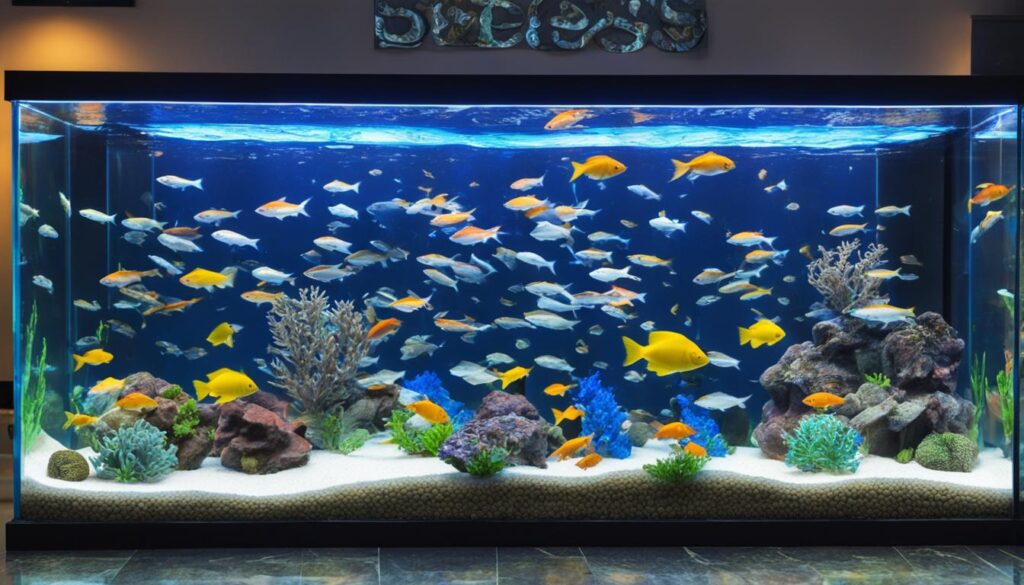
Before breeding your aquarium fish, it’s crucial to condition them to maximize their reproductive potential. Proper conditioning ensures that your fish are healthy and ready to breed. Here are a few techniques and strategies to get your fish in optimal condition for successful breeding, especially for those interested in breeding fish for profit.
1. Feeding a Nutritious Diet
Offering a balanced and nutrient-rich diet to your fish is critical to ensure they are healthy and ready for breeding. A diet high in protein, vitamins, and minerals can boost their immune system, increase their energy levels, and promote reproductive activity. Consider including live or frozen food, such as bloodworms, brine shrimp, or daphnia, to their diet, as these are great sources of essential nutrients. Be careful not to overfeed them, as it can lead to obesity and health problems, which can affect their breeding.
2. Regulating the Water Conditions
Maintaining the right water conditions is essential for fish breeding. Check and regulate the water temperature, pH level, and hardness daily, ensuring the optimal conditions for your fish’s natural habitat. These conditions can vary depending on the species, so it’s essential to research your fish’s specific needs. It is also recommended to perform regular water changes to avoid any stress on your fish’s system and ensure the water is clean and healthy for breeding.
3. Providing a Suitable Breeding Environment
Conditioning your fish’s breeding environment plays a critical role in preparing them for successful breeding. Ensure the breeding tank is spacious, clean, and adequately filtered. Include plants, caves, and other décor to create a secure and comfortable environment for your fish. A breeding box or designated breeding net can also be added to secure the eggs and protect the fry until they reach adulthood.
“Properly conditioning your fish before breeding is the cornerstone to successful and lucrative fish breeding for profit. Performing these techniques and strategies can increase your fish’s reproductive potential and ensure healthy, thriving fry.”
By following these techniques and strategies, you can ensure that your fish are in good health and ready to breed. Proper conditioning is the first step towards successful breeding and the foundation for future generations to come.
Spawning Behavior and the Breeding Process
When it comes to breeding fish for profit, understanding the spawning behavior and breeding process of your aquarium fish is crucial. There are several stages to the breeding process that require accurate intervention, so it’s important to have the knowledge necessary to support and enhance the successful reproduction of your fish.
The first stage of the breeding process is courtship, where the male and female fish begin to show interest in one another. As the male courts the female, he may change color, swim erratically, or build a nest to attract her. It’s important to provide a comfortable environment with sufficient space and hiding places for the fish to reduce stress and increase the chance of successful courtship.
The next stage is spawning, where the male fertilizes the eggs laid by the female. Once the eggs have been fertilized, they should be removed from the breeding tank and placed into a separate tank to ensure an optimal environment for hatching. The typical timeframe for hatching depends on the species of fish, and it is essential to monitor the temperature and water quality of the hatching tank.
After the eggs hatch, the fry will enter the larval stage, where they will require a specialized diet to grow and develop properly. Some species may require specific water conditions, and monitoring their behavior is crucial. If you’re planning on breeding fish for profit, it’s important to note that the number of fry produced will vary depending on the species and size of the breeding pair.
Proper breeding techniques, including monitoring the environment and the behavior of the fish, are essential in supporting successful reproduction of your aquarium fish.
As the fry continue to grow and develop, certain species may start to exhibit aggression towards one another, requiring separation. Ensuring that fry have sufficient space and optimal water conditions is essential throughout their growth process to avoid health issues and promote healthy development. Proper breeding techniques, including monitoring the environment and the behavior of the fish, are essential in supporting successful reproduction of your aquarium fish.
Caring for the Eggs and Fry
Once you have successfully bred your aquarium fish, proper care during the egg and fry stages is vital to ensure their survival and growth. The first step in caring for your new offspring is preparing the right environment.
Ensure that the temperature and water quality of the breeding tank are stable and that there are no sudden fluctuations. You should also provide adequate oxygenation for the eggs and fry, which can be achieved through the use of air stones or adding slow-moving water that increases surface agitation.
When it comes to feeding, fry need to be fed more frequently than adult fish. You can start by feeding freshly hatched brine shrimp or infusoria. As they grow, you can introduce more substantial foods such as microworms, small daphnia, or commercially available fry food.
It’s also important to keep up with regular water changes to maintain good water quality. However, be careful not to over-clean the breeding tank as it can disrupt the fry’s environment and cause unnecessary stress.
One of the biggest challenges during this stage is preventing cannibalism among the fry. To prevent this, you can provide hiding places such as live plants, plastic pipes, or breeding nets until they are large enough to coexist peacefully without the risk of being consumed.
By following these essential steps, you can ensure the successful development of your fry, leading to a thriving community of adult aquarium fish. Remember, patience and attention to detail are key to successful fish breeding!
Rearing the Fry: From Juveniles to Adults
After successfully breeding and hatching your fish eggs, it’s essential to take care of the fry properly to ensure their healthy development into adults. As outlined in my fish breeding guide, specific techniques can help rear fry and facilitate their growth in the most optimal conditions.
Feeding Techniques
Feeding your fry is a crucial aspect of their growth and development. In the beginning, fry require high amounts of protein to grow, so providing them with freshly hatched brine shrimp, microworms, or powdered fry food is recommended. As they mature, gradually introduce other foods such as frozen or live daphnia or small flakes of specialized food for fry.
Tank Maintenance
To ensure the optimal health and growth of your fry, frequently testing and maintaining the water quality is crucial. Perform partial water changes regularly, replace or clean the filter media regularly to prevent waste accumulation and maintain stable water temperatures. Keep the tank clean and provide adequate aeration with air stones and filters to maintain the appropriate oxygen levels.
Strategies for Success
During this crucial rearing stage, it’s important to monitor your fry’s growth and development. When necessary, separate larger or more aggressive fry from smaller or weaker ones to ensure all fry receive adequate food. Additionally, perform regular tank maintenance to prevent overcrowding and improve water quality. By following these tips, you can successfully rear your fry from juveniles to beautiful, healthy adults.
| Breed | Suggested Food Options |
|---|---|
| Guppies | Frozen or live brine shrimp, powdered fry food, small flakes |
| Angelfish | Frozen or live daphnia, baby brine shrimp, powdered fry food, small flakes |
| Discus | Frozen or live brine shrimp, baby brine shrimp, blackworms, powdered fry food |
Troubleshooting Common Breeding Problems
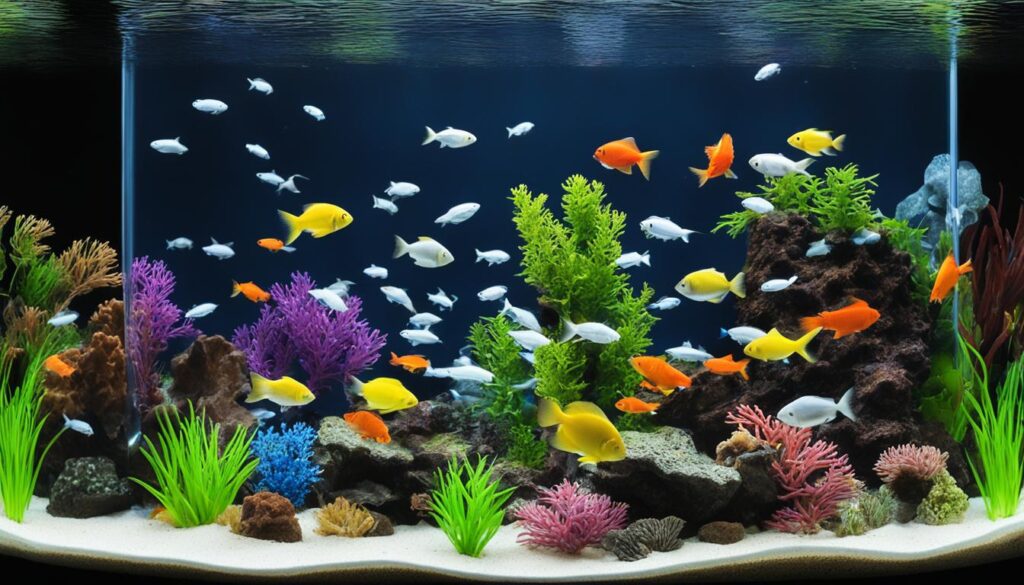
Breeding fish for beginners can be a challenging experience, and unexpected issues may arise. However, by identifying and troubleshooting common breeding problems, you can navigate potential obstacles and ensure a successful breeding outcome. Here, I will discuss some common breeding problems and offer solutions to help you overcome them:
Problem 1: Poor Water Quality
Poor water quality can negatively affect breeding by leading to stress in fish and ultimately, loss of eggs or fry. Ensure the water temperature, pH levels, and ammonia and nitrate levels are within recommended ranges for your particular fish species. Consider investing in a reliable water testing kit to regularly monitor water quality.
Problem 2: Incompatible Breeding Pair
Choosing the right breeding pair is crucial for successful breeding. Some fish species may show aggression towards their partner or be incompatible due to size differences. Research the breeding behaviors and compatibility of your chosen fish species. If necessary, consider swapping out one of the pair for a more compatible mate.
Problem 3: Unsuitable Breeding Environment
Creating an ideal breeding environment is essential for successful reproduction. Ensure the tank size, decorations, and water parameters are suitable for your fish species. Additionally, provide ample hiding places, as some species may feel stressed and refuse to breed if they feel exposed.
Problem 4: Poor Fish Condition
Conditioning your fish correctly before breeding is vital for successful reproduction. Ensure your fish are fed a balanced and nutritious diet, with sufficient protein and vitamins to promote healthy growth and reproductive potential. Overfeeding can result in poor water quality, so be sure to feed in moderation.
Problem 5: Disease Outbreaks
Disease outbreaks can occur at any time and affect the health of your fish, ultimately impeding breeding success. Effective quarantine measures, regular tank cleaning, and monitoring fish behavior can help prevent the outbreak of diseases. If you notice any signs of disease, such as lethargy, loss of appetite, or external parasites, isolate the affected fish and seek medical treatment early on.
By taking these measures to address common breeding problems, you can ensure the success of your breeding efforts and create a thriving underwater community.
Breeding for Sustainable Populations
As aquarium fish enthusiasts, it’s our responsibility to participate in and support conservation efforts. Breeding fish for profit can also contribute to sustainable populations when done responsibly.
One approach to responsible fish breeding is to work with rare or endangered species. Breeding these fish can help increase their population size and prevent them from becoming extinct. Additionally, many aquarium fish species are overfished in the wild, so breeding them in captivity can reduce the demand for wild-caught fish.
Adopting sustainable practices in your breeding efforts can also help protect the environment. For instance, using sustainable and eco-friendly materials when setting up your breeding tank can minimize your environmental footprint. Monitoring and managing your fish’s waste can also ensure safe and healthy living conditions for both your fish and other aquatic species.
With responsible practices and a commitment to conservation efforts, breeding aquarium fish can not only enhance the beauty of your tank but also contribute to the preservation of our planet’s aquatic life.
Conclusion
In conclusion, I hope this comprehensive guide has been informative and helpful in your journey towards breeding aquarium fish. Whether you’re a beginner or experienced in fishkeeping, the tips and techniques provided are designed to assist you in creating a thriving underwater community in your aquarium.
From understanding the basics of fish breeding to selecting the right breeding pair, conditioning your fish, and caring for the eggs and fry, this guide covers all the essential steps required for successful fish breeding. Additionally, I have provided troubleshooting tips for common breeding problems and highlighted the importance of responsible breeding practices for sustainable populations.
Breeding aquarium fish can be a fun and rewarding experience, from creating beautiful underwater displays to potentially generating profit. Don’t be afraid to dive in and experiment with different breeding techniques and species. With the right knowledge and care, you can create a stunning and sustainable underwater ecosystem in your own home.
Thank you for taking the time to read this guide. I hope it inspires you to explore the world of fish breeding for beginners and for profit.
FAQ
Can anyone breed aquarium fish, or is it only for experts?
Breeding aquarium fish is an activity that anyone can enjoy, from beginners to experienced fishkeepers. With the right techniques and knowledge, anyone can successfully breed fish in their aquarium.
What are the essential techniques for successful fish breeding?
Successful fish breeding involves various techniques such as providing the right environment, choosing compatible breeding pairs, conditioning the fish, understanding spawning behaviors, and caring for the eggs and fry. This comprehensive guide will provide you with detailed insights into each of these techniques.
What are some popular aquarium fish species known for their breeding potential?
There are several aquarium fish species known for their breeding potential, including guppies, bettas, mollies, and angelfish. These species are often favored by breeders due to their ease of breeding and prolific reproduction.
How can I condition my fish for breeding?
Conditioning your fish before breeding involves providing them with proper nutrition, maintaining ideal water conditions, and ensuring they are in good health. This section will provide you with tips and strategies to prepare your fish for successful breeding.
What should I do if I encounter common breeding problems?
Common breeding problems such as egg cannibalism, poor egg fertilization, or fry mortality can occur during the breeding process. This guide will offer troubleshooting tips and solutions to address these issues and increase your chances of successful fish breeding.
How can I contribute to sustainable fish populations through breeding?
Breeding aquarium fish responsibly and participating in conservation efforts is crucial for maintaining sustainable fish populations. This section will discuss the importance of responsible breeding practices and provide insights on how you can play a role in conserving fish species.
References
- World Association of Zoos and Aquariums (WAZA)
- International Waterlily & Water Gardening Society (IWGS)
Please also check out the below articles
Master Breeding Techniques for Angelfish – A Guide for Hobbyists
Mastering Dwarf Puffer Fish Care: A Friendly Guide
Male or Female Betta? How to Tell – Your Ultimate Guide
Complete Guide to Plecostomus Tank Size: Tips and Advice
Simple Guide to Easy-to-Care-for Aquarium Plants
Discover the Diverse Corydoras Catfish Varieties- A Guide
Get to Know Various Types of Algae Eaters
Master Guide: Best Water Parameters for Goldfish Care 2023-24
Mastering Black Ghost Knife Fish Care: A Comprehensive Guide
Optimal pH Levels for Tropical Fish: Essential Aquarium Guide
Discovering Freshwater Snail Species: An In-depth Guide
Expert Tips for Breeding Guppies: Keys to Successful Fishkeeping
Discover Peaceful Community Fish: Your Guide to Calm Aquatics
Ultimate Guide to Live Food for Betta Fish — Healthy Choices
Complete Guide to Your Perfect Cichlid Tank Setup
Your Guide to the Best Substrate for Planted Aquariums
Essential Guide to Discus Fish Care: Help Your Pets Thrive!
Grow Your Own Eden: Beginner-Friendly Aquascaping Plants Guide
Perfect Neon Tetra Tank Mates: Guide to Aquarium Harmony
Product Review of Eheim Classic vs Professional
The Ultimate Guide to Discus Fish Care
What Fish Can Live With Discus?
Ideal pH for Discus Fish | Aquarium Water Guide
How to Sex Discus Fish?: A Simple Guide for Hobbyists
Complete Discus Fish Tank Setup Guide
Can Discus Fish Live With Angelfish? The Complete Guide
Discus Diet Guide: What Do Discus Fish Eat?
Are Discus Fish Hard to Keep? Insights & Tips.
Optimal Discus Fish Water Parameters Guide
Discus Fish Size Guide 2024: How Big Do Discus Fish Get?
Ultimate Million Fish Guppy Care Guide 2024
Simple Guide to Easy-to-Care-for Aquarium Plants
Grow Your Own Eden: Beginner-Friendly Aquascaping Plants Guide
Hornwort Aquarium Plants: The Ultimate Guide to Care and Maintenance
Aquarium Equipment for Beginners: The Complete Checklist
Feeding Your Aquarium Fish: The Complete Guide
Common Beginner Fishkeeping Mistakes and How to Avoid Them!
Aquarium Plants for Beginners: Easy Care and Beautiful Options
Keeping Your Aquarium Water Clean and Healthy: The Complete Guide
I am a passionate aquarist with over 30 years of hands-on experience in fishkeeping. My journey began at a young age, collecting fish from the wild and learning through experimentation. Specializing in tropical fish, I bring a deep understanding of the hobby to FishKeepingMadeSimple. The site provides honest, detailed reviews of essential products and accessories to help fellow enthusiasts create the best environments for their fish.

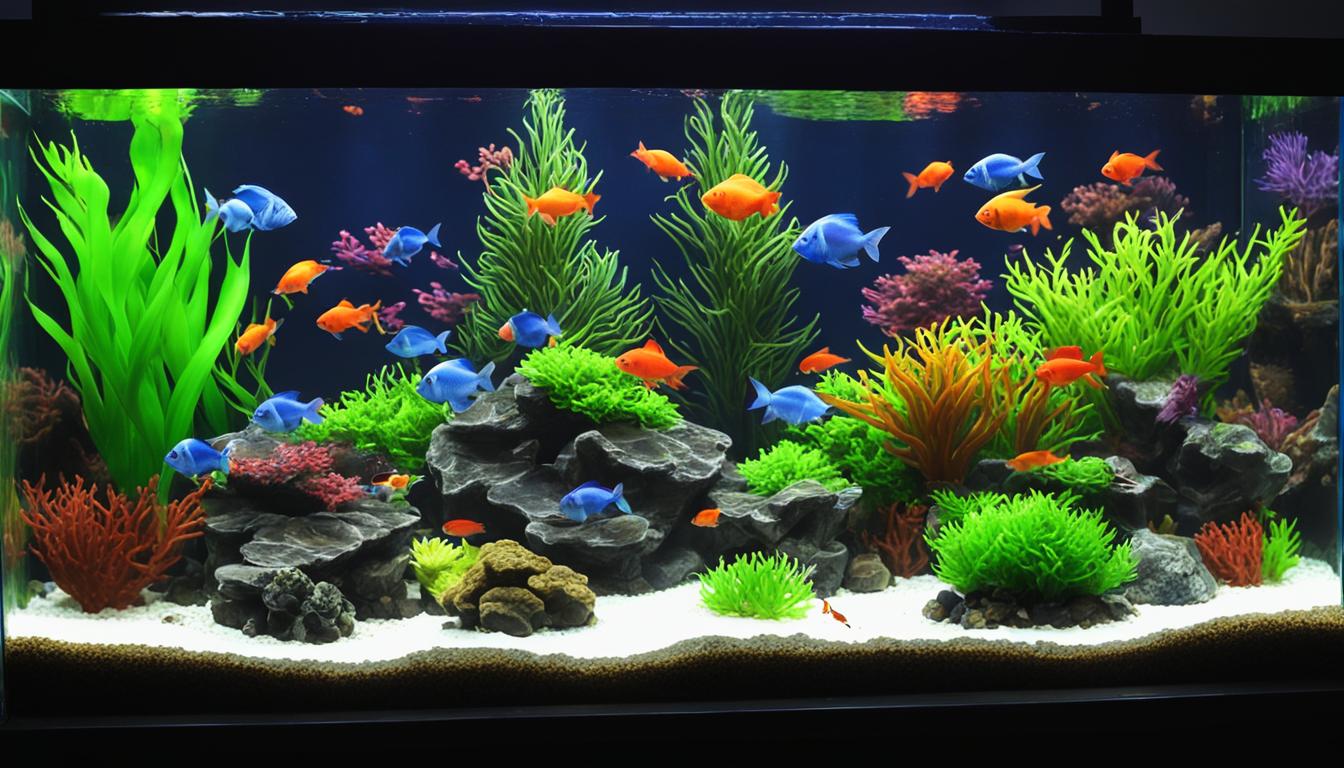
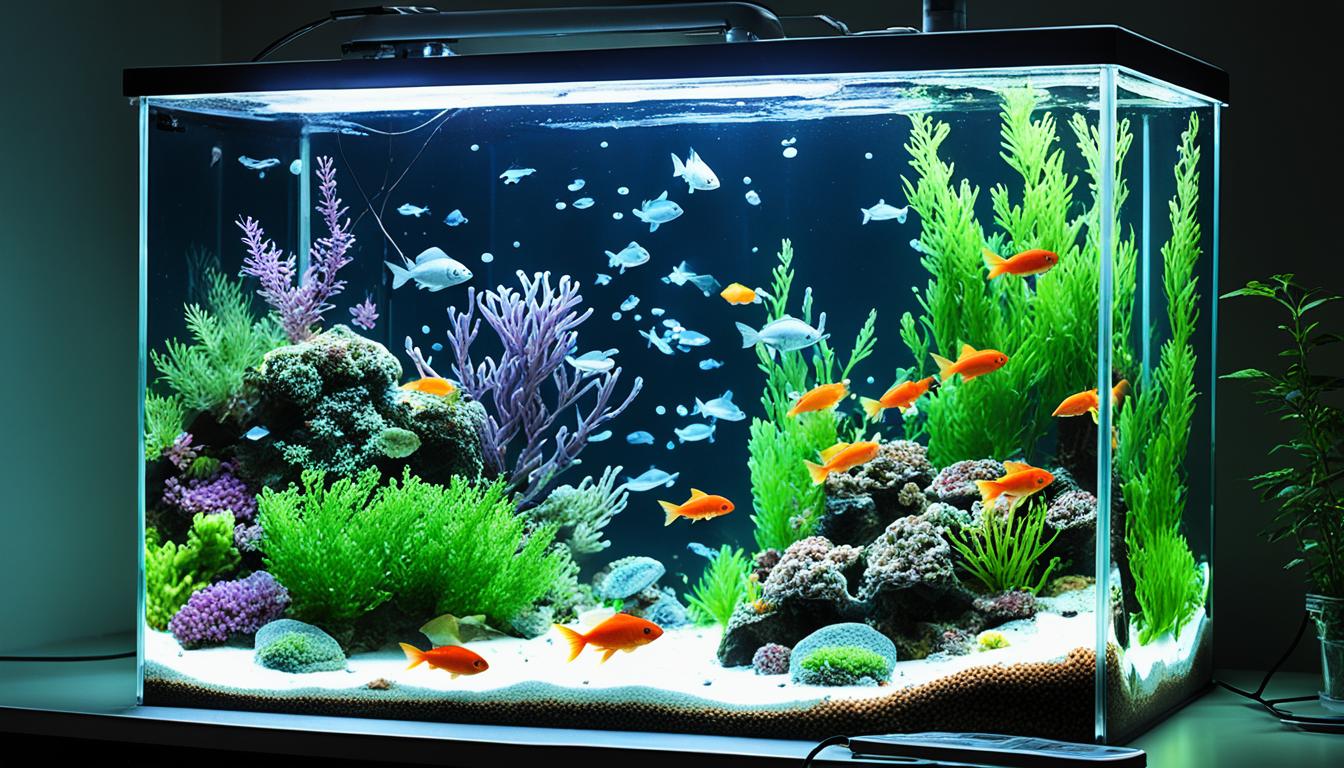
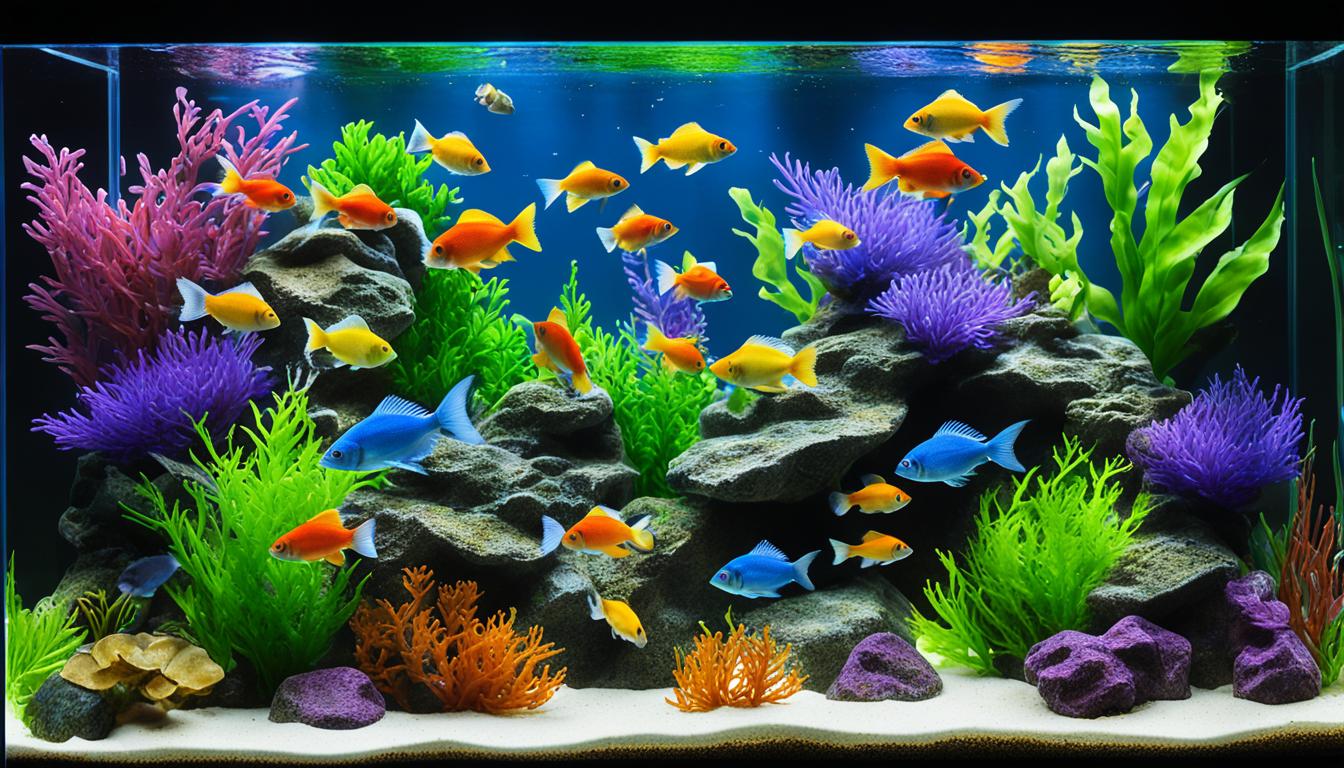






[…] Breeding Aquarium Fish: A Comprehensive Guide […]
[…] Breeding Aquarium Fish: A Comprehensive Guide […]
[…] Breeding Aquarium Fish: A Comprehensive Guide […]
[…] Breeding Aquarium Fish: A Comprehensive Guide […]
[…] Breeding Aquarium Fish: A Comprehensive Guide […]
[…] Breeding Aquarium Fish: A Comprehensive Guide […]
[…] Breeding Aquarium Fish: A Comprehensive Guide […]
[…] most common beginner fish tank mistakes is overstocking the tank. It can be tempting to fill the aquarium with as many fish as possible, but this can have negative consequences for the well-being of the fish and the overall […]